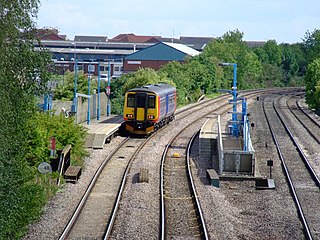
Sileby railway station serves the industrial village of Sileby in Leicestershire, England. The station is located on the Midland Main Line, 106 miles 50 chains (171.6 km) north of London St Pancras.
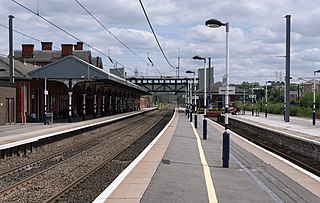
Grantham railway station is on the East Coast Main Line, serving the market town of Grantham, Lincolnshire, England. It is 105 miles 38 chains (169.7 km) down the line from London King's Cross and is situated on the main line between Peterborough to the south and Newark North Gate to the north.

Oakham railway station serves the county town of Oakham in Rutland, England. The station is situated almost halfway between Leicester – 27 miles (43 km) to the west – and Peterborough – 25 miles (40 km) eastward on the Syston and Peterborough Railway, the line is the Birmingham to Peterborough Line.

Melton Mowbray railway station serves the market town of Melton Mowbray in Leicestershire, England. It is owned by Network Rail and operated by East Midlands Railway, though CrossCountry operates most of the services as part of its Birmingham New Street to Stansted Airport route. The station is on the route of the Syston and Peterborough Railway, which is now part of the Birmingham to Peterborough Line. It has a ticket office, which is staffed part-time, a car park, and help points for times when no staff are present.

Hathern railway station was a station serving the village of Hathern in Leicestershire, England.

Trent railway station was situated near Long Eaton in Derbyshire at the junction of the Midland Railway line from London to Derby and Nottingham. It was unusual in that it did not serve any community, being simply an interchange.

Fiskerton railway station is a stop on the Nottingham to Lincoln Line and serves the village of Fiskerton in Nottinghamshire, England; it is located 3 mi (4.8 km) south-east of the small market town of Southwell.
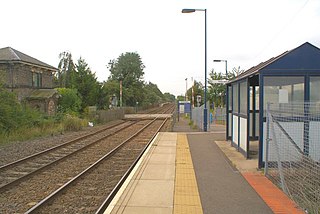
Bleasby railway station serves the village of Bleasby, Nottinghamshire, England. It is on the Nottingham to Lincoln Line, owned by Network Rail and managed by East Midlands Railway.

The A606 is an A road in England that starts in West Bridgford, on the outskirts of Nottingham, and heads southeastwards through Leicestershire and the towns of Melton Mowbray and Oakham, terminating at Stamford, Lincolnshire on the former Great North Road.
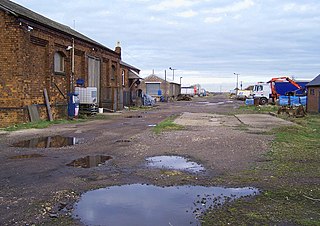
Harby & Stathern railway station is a former station on the Great Northern and London and North Western Joint Railway that served the villages of Harby and Stathern, in Leicestershire, England.

Grimston was a railway station serving both the villages of Saxelbye and Grimston in Leicestershire, England. It was opened on the Nottingham direct line of the Midland Railway between London and Nottingham via Corby.The station was formerly named Saxelbye, the name was changed after only 3 months to avoid confusion with Saxby, a few miles east of Melton Mowbray, on the Midland's other line between Leicester and Peterborough. The village of Grimston lies about one mile to the north west of the former Grimston station. The line still exists today as the Old Dalby Test Track.

Whitacre Junction railway station was opened in 1864 by the Midland Railway. It served the village of Whitacre Heath, Warwickshire, England.

Basford North railway station was a railway station which served Basford and Bulwell in Nottinghamshire, England. It was close to the River Leen, which the line crossed on a nine-arch brick viaduct.
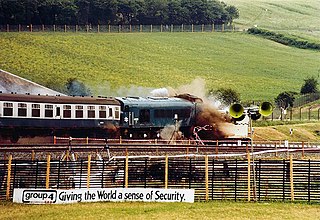
Old Dalby railway station served the village of Old Dalby in Leicestershire, England. It was opened on the Nottingham direct line of the Midland Railway between London and Nottingham, avoiding Leicester. The line still exists today as the Old Dalby Test Track.

Upper Broughton was a railway station serving the village of Upper Broughton in Nottinghamshire, England. It was opened on the Nottingham direct line of the Midland Railway between London and Nottingham, avoiding Leicester. The line still exists today as the Old Dalby Test Track.
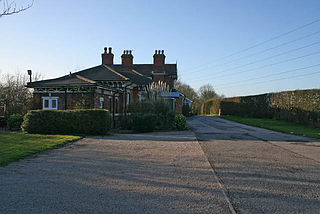
Plumtree railway station served the village of Plumtree in Nottinghamshire, England on the Nottingham direct line of the Midland Railway between London and Nottingham, avoiding Leicester. The station is now a pub and grill an the line still is now used as the Old Dalby Test Track. Although is closed towards Nottingham way.
Edwalton railway station served the village of Edwalton and the nearby town of West Bridgford in Nottinghamshire, England. It was opened on the Midland Railway Melton direct route between London and Nottingham, avoiding Leicester.

Upper Broughton or Broughton-Sulney or Over-Broughton is a village and civil parish about seven miles north west of Melton Mowbray, in the Rushcliffe district of the county of Nottinghamshire, England. In 2011 the built-up area had a population of 327, the same as the parish. The parish count increased to 346 at the 2021 census. The parish touches Wymeswold, Hickling, Widmerpool, Broughton and Old Dalby and Willoughby on the Wolds. Upper Broughton is a conservation area that was designated in 1973 and is 16 hectares. The settlement is near the boundary with Leicestershire, and Nether Broughton is across the county boundary.

Stanton-on-the-Wolds is a small village and a civil parish in Nottinghamshire, England. It is situated about 6 miles (10 km) south-east of Nottingham, just off the A606 Nottingham to Melton Mowbray road. It is bordered by several other villages, namely, Clipston-on-the-Wolds, Normanton-on-the-Wolds, Keyworth and Widmerpool. 413 residents within the parish were reported at the 2021 census.
The Nottingham direct line of the Midland Railway was a new route created in 1879 to relieve congestion on the established routes of the Midland Railway, in England. It consisted of two connecting lines that, together with part of an existing route, formed a new route from Nottingham to near Kettering. The line was used for Nottingham to London express passenger trains, and for heavy mineral and goods trains heading south. As well as shortening the transit a little, the new line had the effect of relieving congestion on the original main line through Leicester, that had become excessively congested.



















